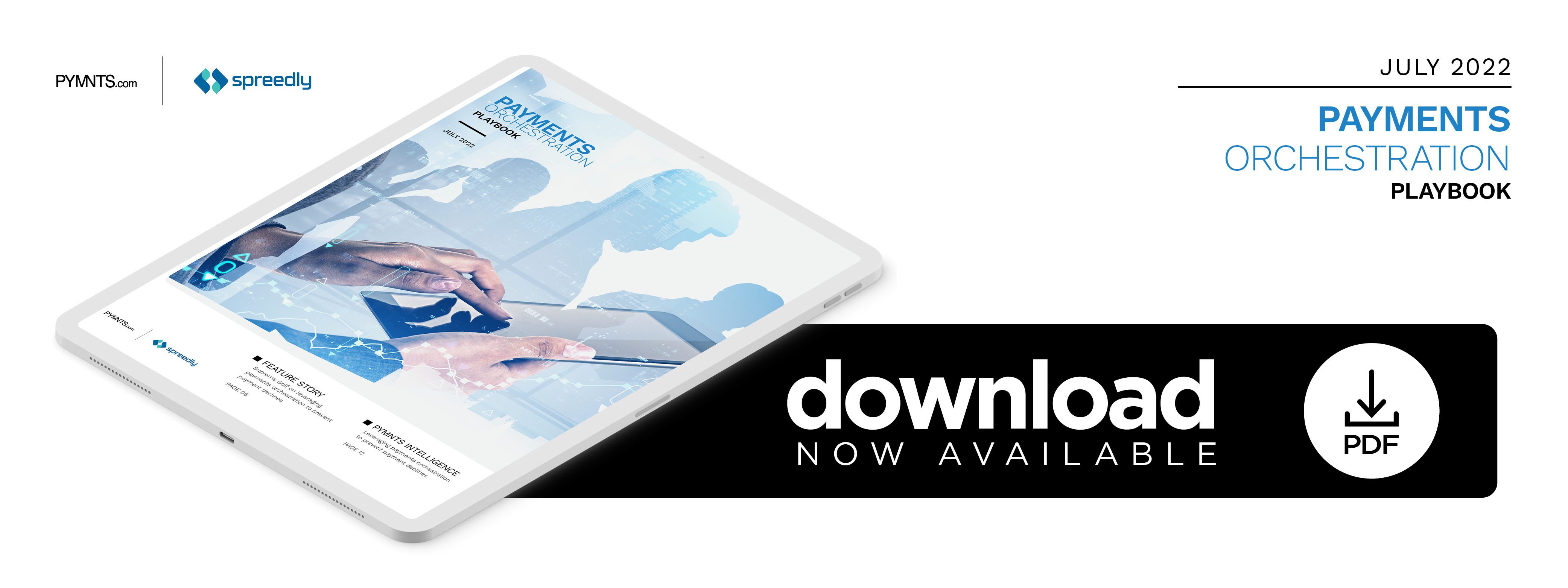PYMNTS Intelligence: Leveraging Payments Orchestration to Enhance Success Rates

Spurred by the pandemic’s chilling effect on brick-and-mortar retail, consumers who discovered the convenience of contactless cards and peer-to-peer (P2P) payment apps have turned to digital payments more than ever before. Businesses are rushing to meet this demand, especially for cross-border purchases. United States global merchants now accept an average of 7.3 payment methods and 19 currencies, enabling them to support purchases from around the world.
For some merchants, however, the expanding number of payment options has led to a commensurate increase in one of payments’ thorniest problems: payment declines. Growing competition can make payment declines even more devastating for merchants, as shoppers have far more alternatives to patronize when their payments are declined.
Preventing payment declines is a top priority for businesses that offer digital payments. This month, PYMNTS Intelligence examines how payments orchestration systems can keep these declines to a minimum to help maintain customer loyalty.
Payment Declines’ Causes and Effects
Anyone who has had a credit card transaction fail to process knows how irksome a payment decline can be, and this feeling is compounded when no alternative card or cash is at hand to replace it. Digital payment declines can be even more exasperating, as consumers often have access to just one digital payment method when shopping online, and cash is not usable. One of the most common reasons for payment failure is when the merchant flags customer activity as suspicious, accounting for 24% of payment declines. What the system deems suspect is often completely opaque to the customer, resulting in frustration.
These declines have risen recently, especially in Europe as Strong Customer Authentication (SCA) rules went into effect earlier this year. Businesses in the United Kingdom have seen an average increase of 37% in payment decline rates, and 99% of merchants report their payment declines increased by 5% or more. One-third said the regulations have had a negative effect on customer experiences.
Consumers’ access to digital payment methods may be limited, but the array of digital merchants available is virtually endless. If a payment is declined by one merchant, it may be far easier for them to take their business elsewhere than to seek an alternative payment with the original merchant. Three-quarters of consumers have reported switching merchants, products and buying methods for myriad reasons since the beginning of the pandemic.
This alarming abandonment rate has left companies scrambling to find a way to prevent payment declines. Payments orchestration systems could be a key part of making this a reality.
Preventing Payment Declines Through Orchestration Solutions
Payments orchestration systems are critical tools for preventing payment declines and vastly improving the customer experience. This technology offers financial institutions and merchants the capability of integrating new payment methods and different payment gateways in a seamless and customer-friendly way, completely automating the link between payment methods and payment gateways. A merchant can route traffic to specific payment providers based on a variety of factors to help improve authorization rates and limit declines. This can boost authorization rates by up to 5%, averaging an additional $12 million in sales in one case study.
Another case study found that one business reduced its decline rate to just 5% to 8% of all transactions and discovered that up to 35% of its declines were completely false to begin with. Eliminating more than one-third of all declines could offer merchants a substantial leg up, not simply by reducing declines but also by curtailing customer abandonment. The true savings of implementing payments orchestration systems may well be incalculable.
Consumers have a cornucopia of choice when it comes to online merchants, so it is incumbent on eTailers to give them the best shopping experiences possible to convince them to stay. Deploying payments orchestration systems to reduce payment declines can be a significant step toward this objective.

